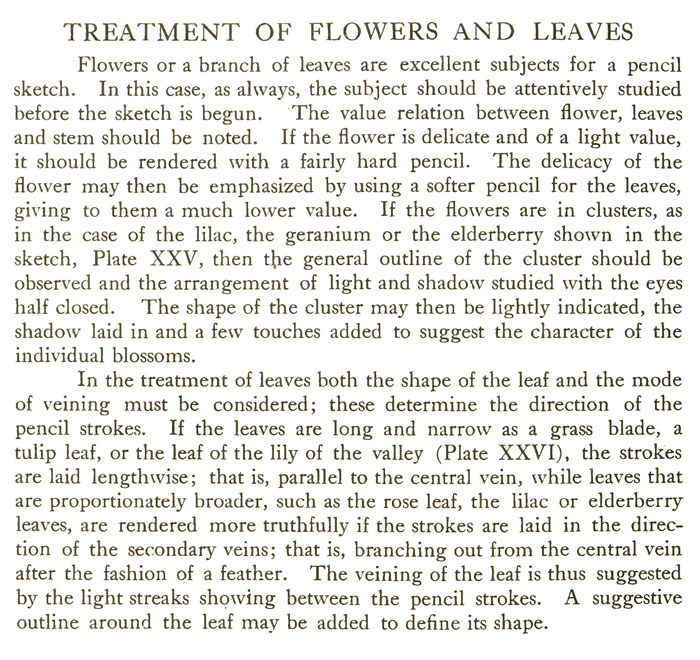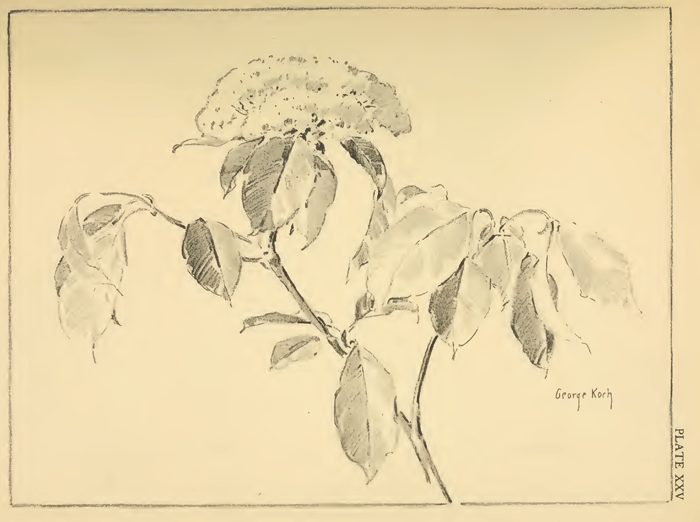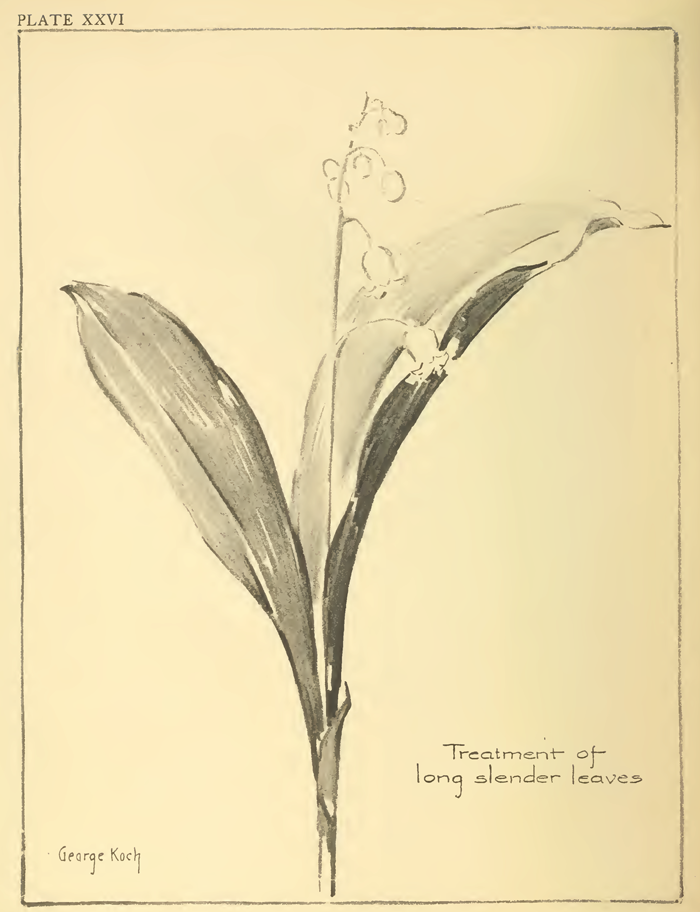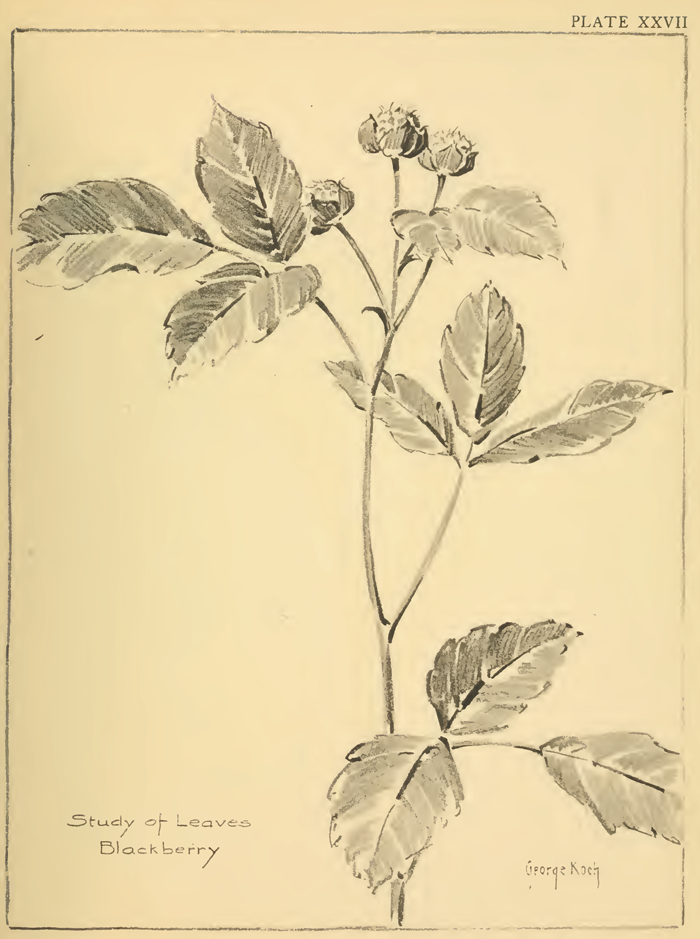Home > Directory of Drawing Lessons> Nature Drawing > Drawing Flowers > Tips for Drawing Flowers and Leaves
DRAWING FLOWERS & LEAVES : Learn how to Draw Flowers & Leaves with the Following Lesson
|
|
DRAWING FLOWERS AND LEAVES WITH PENCILS The above text is actually made up of images, so if you need to copy the text for some reason, I have typed it below for you. TREATMENT OF FLOWERS AND LEAVESFlowers or a branch of leaves are excellent subjects for a pencil sketch. In this case, as always, the subject should be attentively studied before the sketch is begun. The value relation between flower, leaves and stem should be noted. If the flower is delicate and of a light value, it should be rendered with a fairly hard pencil. The delicacy of the flower may then be emphasized by using a softer pencil for the leaves, giving to them a much lower value. If the flowers are in clusters, as in the case of the lilac, the geranium or the elderberry shown in the sketch, Plate XXV, then the general outline of the cluster should be observed and the arrangement of light and shadow studied with the eyes half closed. The shape of the cluster may then be lightly indicated, the shadow laid in and a few touches added to suggest the character of the individual blossoms. In the treatment of leaves both the shape of the leaf and the mode of veining must be considered; these determine the direction of the pencil strokes. If the leaves are long and narrow as a grass blade, a tulip leaf, or the leaf of the lily of the valley (Plate XXVI), the strokes are laid lengthwise; that is, parallel to the central vein, while leaves that are proportionately broader, such as the rose leaf, the lilac or elderberry leaves, are rendered more truthfully if the strokes are laid in the direction of the secondary veins; that is, branching out from the central vein after the fashion of a feather. The veining of the leaf is thus suggested by the light streaks showing between the pencil strokes. A suggestive outline around the leaf may be added to define its shape.
|
Privacy Policy .... Contact Us








